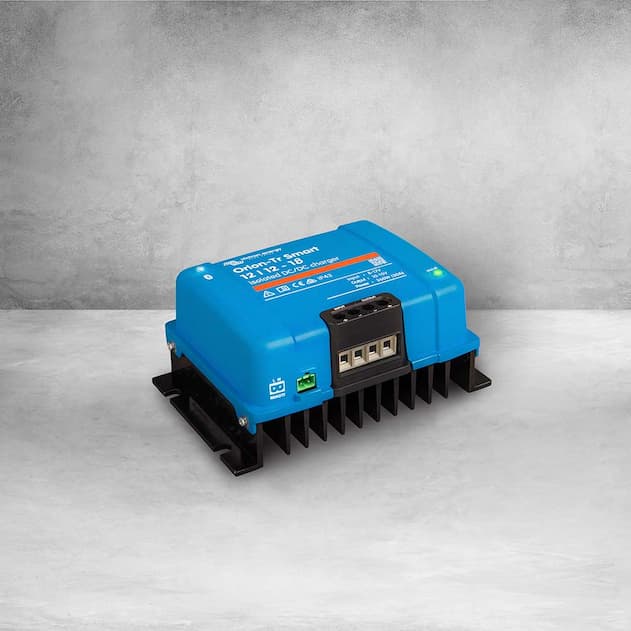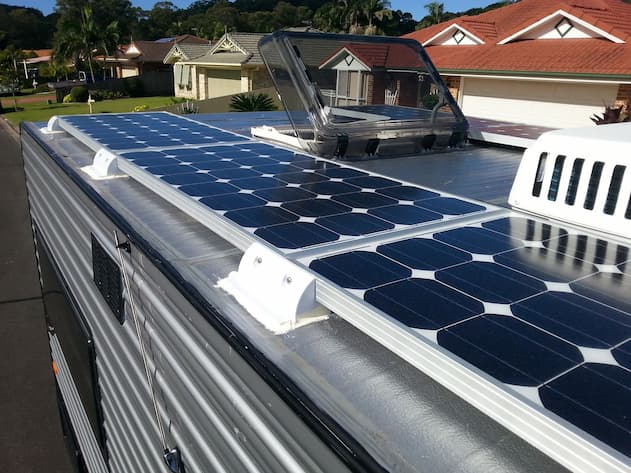DC to DC Chargers: Get Maximum Current into your Battery
Electricity is the greatest wonder of the modern age. It allows us to enjoy things that we didn’t consider possible just a century ago. And while electricity in its fullest form is a network of factories, pipelines, and cables that work together to bring this wonder to us – there is a commonly overlooked helpful instrument. This instrument can store electricity and help us use our tools and gadgets, even on the go. The amazing thing I’m talking about is batteries. We have them in our phones, laptops and other devices. However, one commonly overlooked place where they’re everpresent is cars, especially caravans and towing vehicles.
These batteries perform many tasks, and you need to monitor them so that you can use your vehicle. There’s nothing worse than trying to turn on your caravan or some appliance in it and just coming up short. Now, there are many different ways to charge them, either by your alternator, an RC charger, or acdc chargers. That said, the goal of this article is to present an efficient new alternative, a DC to DC charger. I will go over them in great detail, and I’ll explain what type of batteries there are in a caravan and what they do. Then, I’ll go into the use of these DC to DC chargers and their many benefits.

Source: dakotalithium.com
Batteries and Currents
The reason why I first start with a clear, terminological explanation is that you’ll need an understanding of the caravan’s batteries and what they do. Before you decide to buy acdc chargers or DC to DC chargers, it’s paramount to know why they’re a worthwhile investment.
Types of Batteries
There are two types of batteries that you can use – starting and the deep cycle batteries. You use the starting battery to start your car, as it delivers a large burst of power specifically for this purpose. It cannot withstand multiple short-term discharges, and you need an alternator to fill it up again.
Deep cycle batteries, on the other hand, supply a steady amount of current for a long time. You don’t have to worry about their life because you can repeatedly discharge and recharge them. As such, they find their use in powering numerous electronics and appliances.
Types of Currents
There are two types of current – AC (alternating current) and DC (direct current). The first one comes from the electrical grid, so you use it every day in your household, and you can also get it from a standard campground electrical hook-up. On the other hand, DC is produced using solar panels, for example, and you store it in batteries. With that in mind, depending on how you charge your caravan, you can use either of these two currents. But keep in mind that AC is the recommended type of power for the majority of your appliances and devices, especially those that have a motor.

Source: nerdtechy.com
How DC to DC Works
The first thing to clarify is that DC, unlike AC, does not need a connection to a standard AC outlet. It automatically uses the power of your alternator to charge your house battery. The alternator, otherwise, only fills up the starting battery. Nowadays, most caravans have smart alternators. The traditional alternator had a fixed voltage output that could power both the starting and the deep cycle battery (also called auxiliary). The smart one has a low output and is load-sensitive, so it isn’t enough. However, using the DC to DC charger, you can fix this problem. The DC to DC chargers is, therefore, simple to use and extremely efficient.
The Connection
In simple terms, the charger takes power from the alternator through the starting battery and then fills up the auxiliaries. To accomplish this, you need to connect your input and output cables to the alternator and starter battery and then two other input and output cables to the output battery (deep cycle or auxiliary).
The two technical specifics you want to consider are voltage and watts, and isolated or non-isolated. The voltage and the watts determine the charging rate. Meanwhile, isolated means there’s a technical separation between the output and input of the DC to DC charger. This feature is useful for safety reasons.
Levels of Charging
There are three levels to the process of charging the batteries – boost, absorption and float. The first one is the boost that delivers maximum voltage to an empty battery. The next one is absorption, which is a continual charge until the battery current demand reaches less than four amps. Finally, the float is what keeps the battery fully charged and maintains it at 13.3 volts. The float is essentially a lower charge, and it ensures that the batter won’t overcharge.
However, if you want to use your solar power instead of the alternator, there is another option – solar controllers. You can get solar batteries with a built-in Maximum Power Point Tracking (MPPT) Solar Controller. This feature also allows you to regulate your solar panel connection, so it’s a worthwhile investment to save money.

Source: caravanningaroundaustralia.com
Benefits
As previously explained, there are many benefits to these powerful devices. They’re especially helpful with modern caravans that have smart alternators. As a plus, they have several moods that guarantee that your battery is safe and sound with no possibility of overheating or overcharging. Moreover, they’re easy to use, and they can even be useful for solar energy. The only major disadvantage is that they are relatively more expensive. However, they do have other advantages that I didn’t mention so far.
Lithium
Most lithium batters, which are present in caravans, need the correct charging profile. This is only accomplishable by the DC to DC chargers.
Software Connection
Most chargers come equipped to be used with a Bluetooth-enabled smartphone. As such, you can easily change the settings from anywhere with just the press of a button. Furthermore, you’ll be updated whenever new software is available.
Saves Money
As previously mentioned, the charger has plenty of uses. They preserve the quality of your caravan and its batteries, so you will never have to worry about running out of energy or spending money to replace the parts, as long as you properly take care of them.



